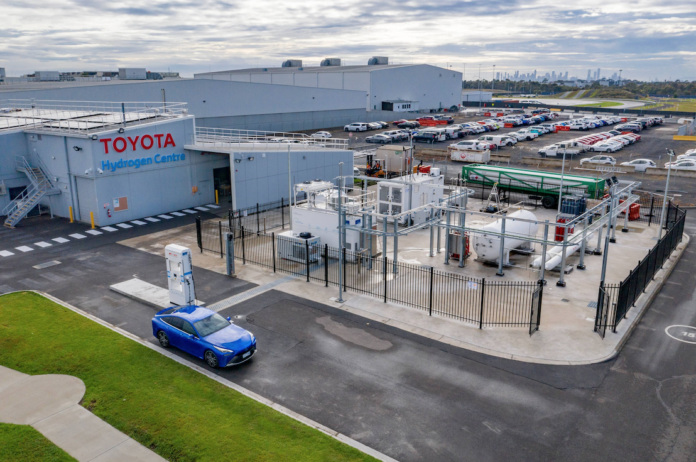Toyota has commissioned Victoria’s first commercial-grade permanent hydrogen production, storage and refueling facility at its former manufacturing site in Altona, Australia.
Matthew Callachor, president and CEO of Toyota Australia, says the Toyota Hydrogen Center was built to showcase the benefits of hydrogen fuel cell technology as part of its commitment to developing sustainable technologies for future mobility and energy needs.
“Globally, Toyota is committed to achieving zero CO2 emissions from its vehicles and plants under the Toyota Environmental Challenge 2050 and the commissioning of our hydrogen refueling facility is an important step towards achieving that goal,” says Callachor. “By demonstrating the viability of renewably-produced hydrogen as an automotive and energy fuel through this project, Toyota and its partners in government and business are pioneering a cleaner, more sustainable future that will encourage the further acceptance of this technology.”
Sustainably produced hydrogen is the core element to fuel vehicles like the Toyota Mirai fuel cell electric vehicle (FCEV), a vehicle that produces no CO2 emissions, requires no battery recharging and has a range of 650 km. The Toyota Mirai has been sold in markets in Japan and U.S. for the past seven years but the greatest challenge to the broad-scale introduction of FCEVs in Australia has been a lack of refueling infrastructure.
Together with the hydrogen production, storage and refueling facility, the Toyota Hydrogen Center also incorporates an Education Center to provide information on how hydrogen fuel cells work and the benefits to society – helping to dispel any myths around the safety and use of hydrogen as a fuel.
Hydrogen is produced on site by a 200 kW electrolyzer that uses electricity to split water into hydrogen and oxygen components and has the capacity to produce up to 80 kg of hydrogen per day. Power for the electrolyzer is drawn from a combination of an 87 kW solar array, a 100 kW battery storage and the main grid – depending on what’s available at the time.






